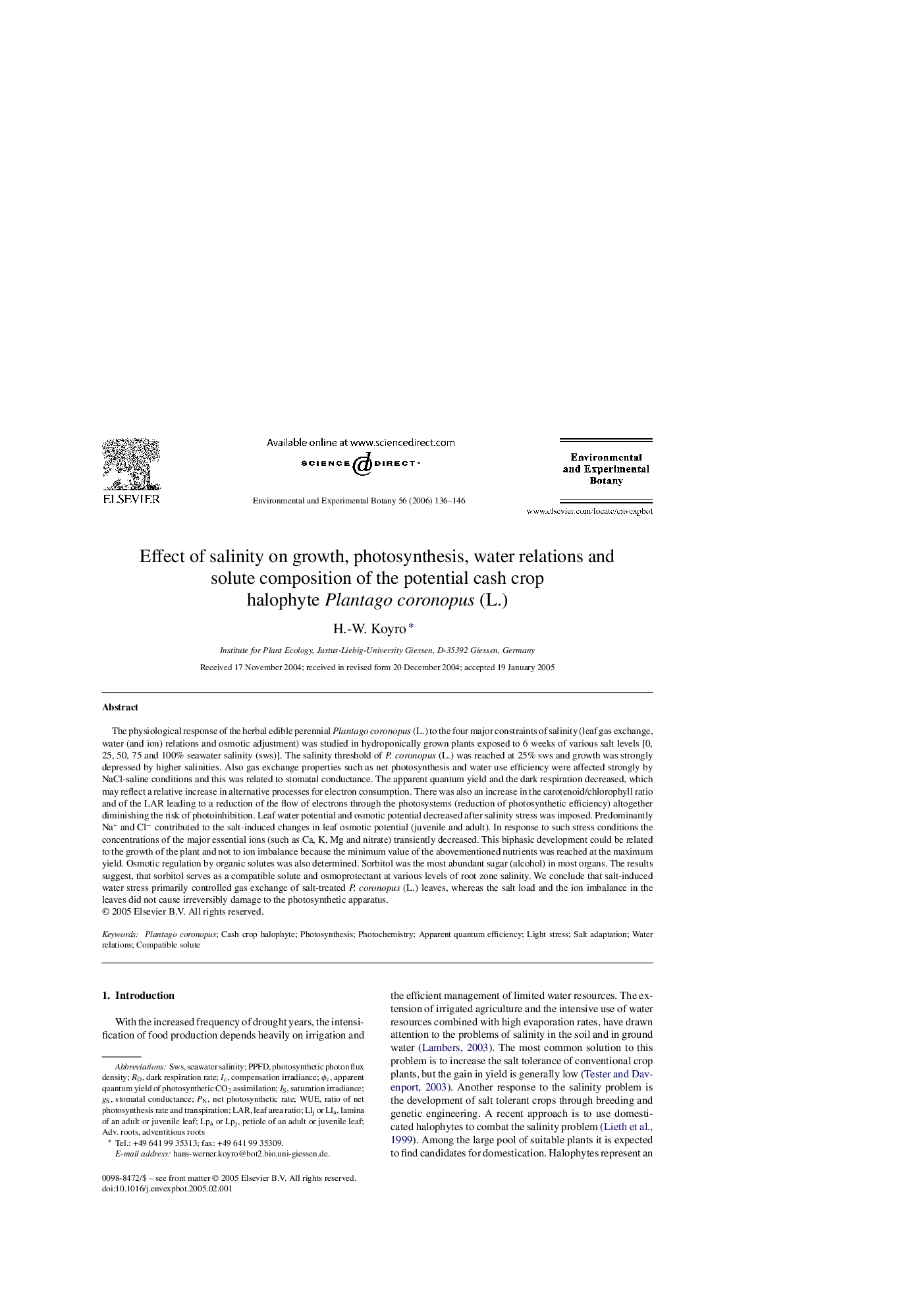| کد مقاله | کد نشریه | سال انتشار | مقاله انگلیسی | نسخه تمام متن |
|---|---|---|---|---|
| 4555534 | 1329264 | 2006 | 11 صفحه PDF | دانلود رایگان |

The physiological response of the herbal edible perennial Plantago coronopus (L.) to the four major constraints of salinity (leaf gas exchange, water (and ion) relations and osmotic adjustment) was studied in hydroponically grown plants exposed to 6 weeks of various salt levels [0, 25, 50, 75 and 100% seawater salinity (sws)]. The salinity threshold of P. coronopus (L.) was reached at 25% sws and growth was strongly depressed by higher salinities. Also gas exchange properties such as net photosynthesis and water use efficiency were affected strongly by NaCl-saline conditions and this was related to stomatal conductance. The apparent quantum yield and the dark respiration decreased, which may reflect a relative increase in alternative processes for electron consumption. There was also an increase in the carotenoid/chlorophyll ratio and of the LAR leading to a reduction of the flow of electrons through the photosystems (reduction of photosynthetic efficiency) altogether diminishing the risk of photoinhibition. Leaf water potential and osmotic potential decreased after salinity stress was imposed. Predominantly Na+ and Cl− contributed to the salt-induced changes in leaf osmotic potential (juvenile and adult). In response to such stress conditions the concentrations of the major essential ions (such as Ca, K, Mg and nitrate) transiently decreased. This biphasic development could be related to the growth of the plant and not to ion imbalance because the minimum value of the abovementioned nutrients was reached at the maximum yield. Osmotic regulation by organic solutes was also determined. Sorbitol was the most abundant sugar (alcohol) in most organs. The results suggest, that sorbitol serves as a compatible solute and osmoprotectant at various levels of root zone salinity. We conclude that salt-induced water stress primarily controlled gas exchange of salt-treated P. coronopus (L.) leaves, whereas the salt load and the ion imbalance in the leaves did not cause irreversibly damage to the photosynthetic apparatus.
Journal: Environmental and Experimental Botany - Volume 56, Issue 2, June 2006, Pages 136–146